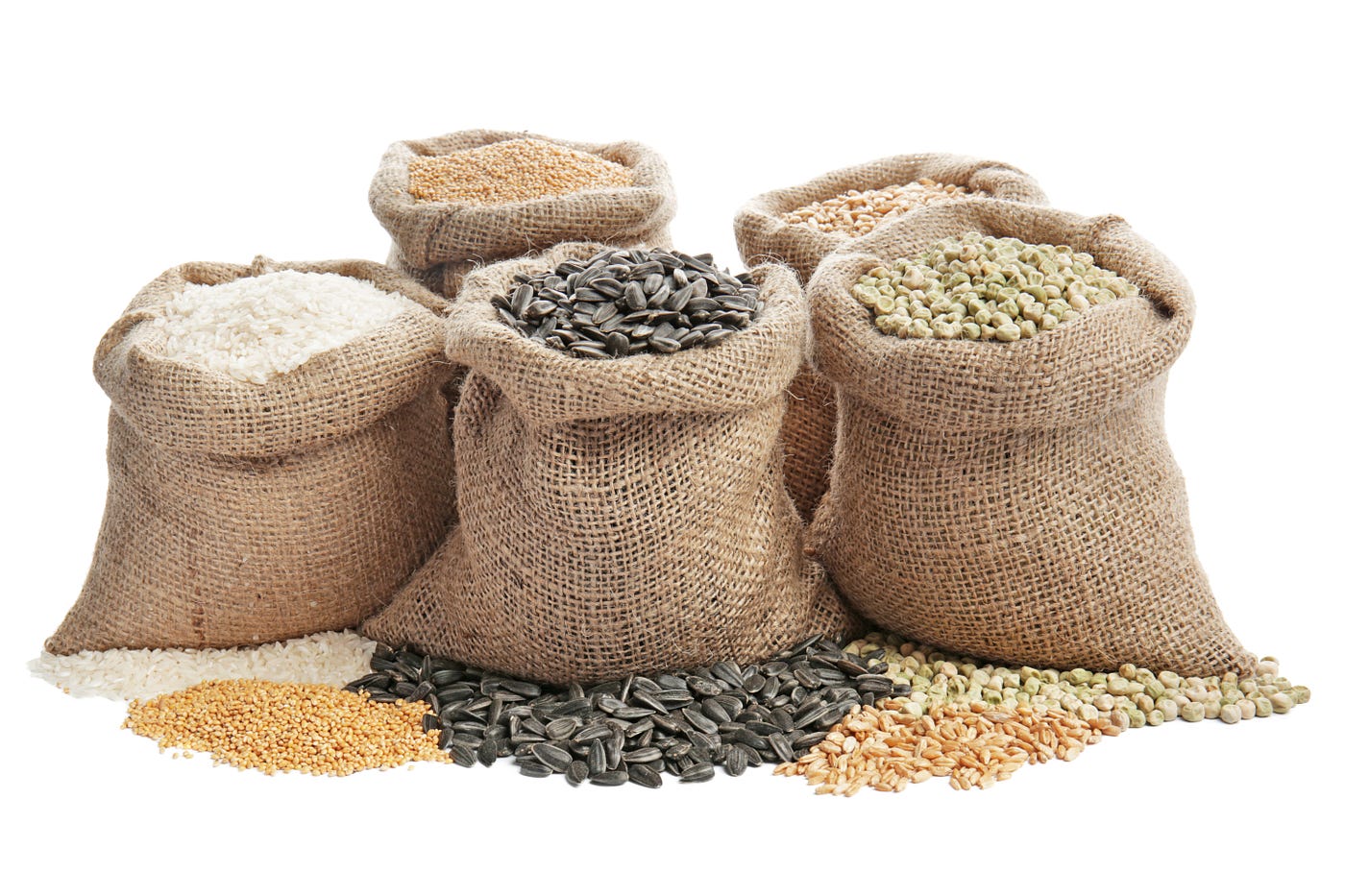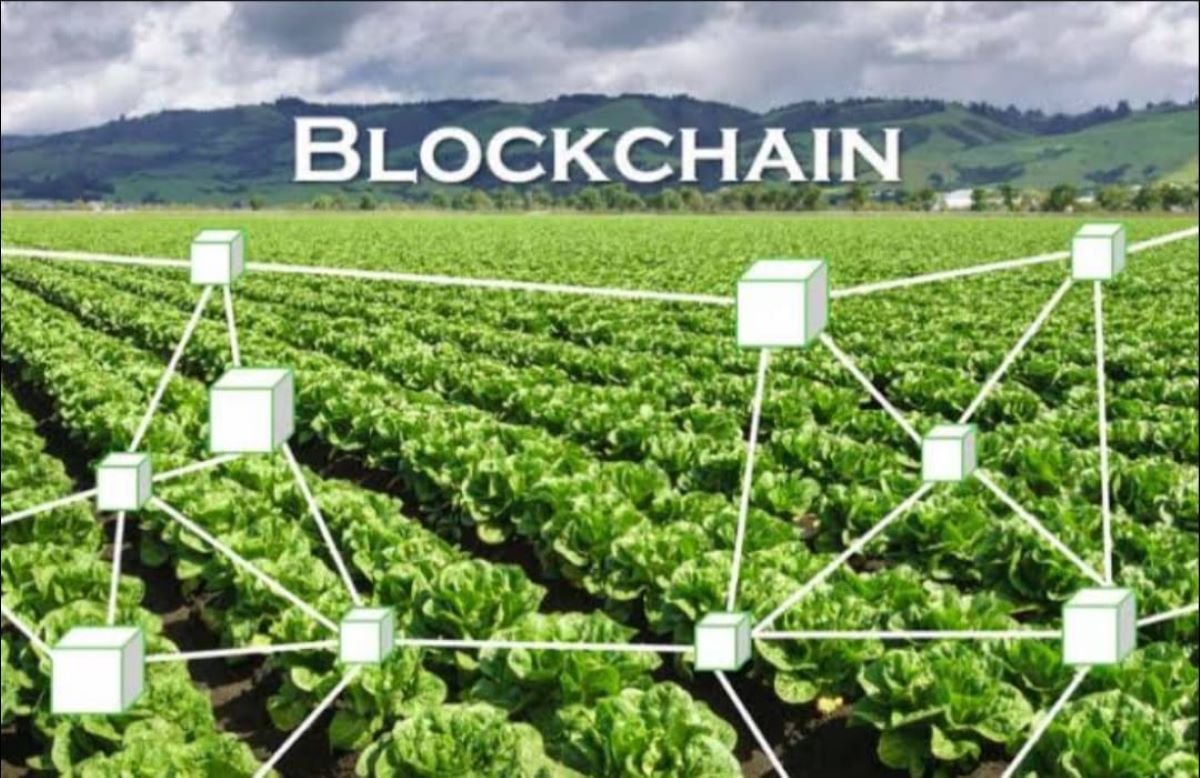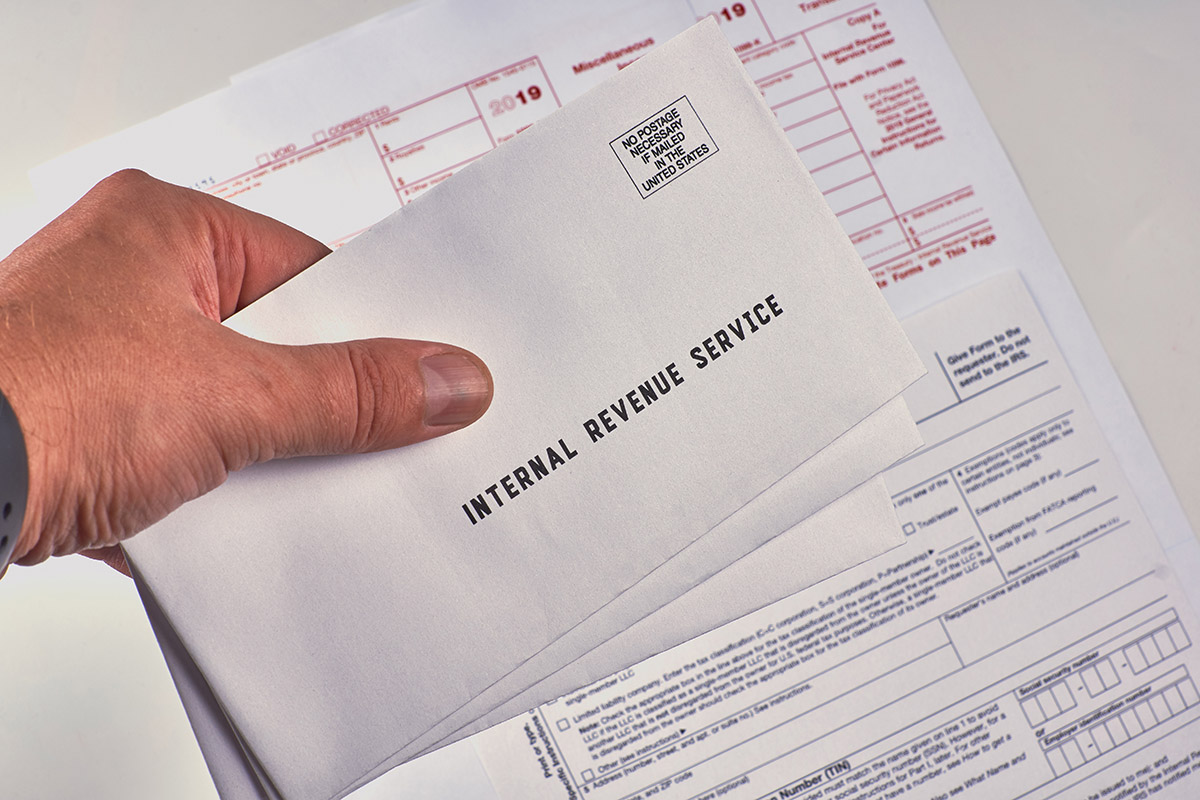

Finance
How To Invest In Agriculture Commodities
Published: October 27, 2023
Learn how to invest in agriculture commodities and diversify your finance portfolio. Explore strategic opportunities for growth in this lucrative sector.
(Many of the links in this article redirect to a specific reviewed product. Your purchase of these products through affiliate links helps to generate commission for LiveWell, at no extra cost. Learn more)
Table of Contents
- Introduction
- Understanding Agriculture Commodities
- Benefits of Investing in Agriculture Commodities
- Risks Associated with Investing in Agriculture Commodities
- How to Choose the Right Agriculture Commodities to Invest In
- Different Ways to Invest in Agriculture Commodities
- Factors to Consider Before Investing in Agriculture Commodities
- Tips for Successful Investing in Agriculture Commodities
- Conclusion
Introduction
Investing in agriculture commodities has become an attractive option for many investors looking to diversify their portfolios and capitalize on the growing demand for food and other agricultural products. Agriculture commodities refer to essential goods produced from farming activities, such as crops, livestock, and natural resources.
The global population is expected to reach 9.7 billion by 2050, leading to increased demand for food, fuel, and fiber. This, coupled with the effects of climate change and limited arable land, makes agriculture commodities an intriguing investment opportunity.
Investing in agriculture commodities offers several benefits, including portfolio diversification, potential for long-term growth, and protection against inflation. However, it also comes with risks and requires careful consideration and research to make informed investment decisions.
In this article, we will explore the world of investing in agriculture commodities, including understanding the different types of commodities, the benefits and risks associated with investing in them, and how to choose the right commodities to invest in. We will also discuss the various ways to invest in agriculture commodities and provide tips for successful investing in this sector.
Whether you are a seasoned investor or new to the world of investing, this article will provide you with valuable insights and guidance on how to navigate the fascinating world of agriculture commodities and make informed investment decisions.
Understanding Agriculture Commodities
Agriculture commodities are essential goods that are derived from agricultural activities. They can be classified into three main categories: crops, livestock, and natural resources.
1. Crops: This category includes grains, such as wheat, corn, and rice, as well as oilseeds, like soybeans and sunflower seeds. It also encompasses fruits, vegetables, and other horticultural products.
2. Livestock: Livestock commodities consist of animals raised for food, such as cattle, poultry, and pigs. These commodities can include fresh meat, eggs, milk, and other animal by-products.
3. Natural resources: Natural resources in agriculture include commodities like timber, cotton, sugar, coffee, and cocoa. These resources are harvested from plants and trees and are often used in various industries.
The value of agriculture commodities is influenced by various factors, including supply and demand dynamics, weather conditions, government policies, and global economic trends. For example, a drought in a major grain-producing region can lead to decreased crop yields, resulting in higher prices for grains.
Understanding the dynamics of agriculture commodities requires keeping track of market trends and staying informed about global events that can impact supply and demand. This knowledge allows investors to identify potential opportunities and make informed investment decisions.
Investing in agriculture commodities can provide a hedge against inflation and economic uncertainty. Food is a basic necessity, and its demand remains relatively stable, even during economic downturns. This stability can help protect investors from the volatility of other asset classes.
Furthermore, agriculture commodities have a low correlation with traditional asset classes like stocks and bonds. This means that including agriculture commodities in a diversified portfolio can help reduce overall portfolio risk.
In the next section, we will discuss the benefits of investing in agriculture commodities and why it can be a lucrative investment strategy.
Benefits of Investing in Agriculture Commodities
Investing in agriculture commodities can offer several benefits for investors. Here are some of the key advantages:
1. Portfolio Diversification: Agriculture commodities provide an opportunity to diversify your investment portfolio. By including commodities such as crops, livestock, and natural resources, you can reduce the overall risk of your portfolio. This is because agriculture commodities have historically shown a low correlation with other asset classes, such as stocks and bonds. When these traditional investments may experience volatility or downturns, agriculture commodities can potentially act as a buffer against losses.
2. Long-Term Growth Potential: With the global population expected to increase in the coming decades, the demand for agricultural products is likely to grow as well. Investing in agriculture commodities allows you to tap into this long-term growth potential. As the world’s limited arable land faces the challenge of producing enough food to feed the population, the prices of agriculture commodities may rise over time. By investing early, you position yourself to benefit from these potentially higher prices.
3. Inflation Protection: Agriculture commodities have historically acted as a hedge against inflation. In periods of high inflation, the prices of commodities tend to rise. This can help protect the purchasing power of your investment portfolio. As agriculture commodities are essential goods, their demand is less likely to be affected by changes in economic conditions compared to other sectors. Therefore, investing in them can provide stability and a potential hedge against the erosion of value caused by inflation.
4. Tangible Asset: Unlike stocks or bonds that represent ownership or debt, agriculture commodities are tangible assets. This means that they have intrinsic value and can be physically owned. Owning tangible assets can provide a sense of security and stability, especially during times of market uncertainty. Additionally, physical ownership of agriculture commodities can offer other benefits, such as tax advantages or the potential for direct use or consumption.
5. Potential for Income and Speculative Gains: Investing in agriculture commodities can offer opportunities for income generation and speculative gains. For example, if you invest in livestock commodities, you may earn income through selling meat or dairy products. Similarly, investing in crops can provide income through selling harvested produce. Additionally, as agriculture commodity prices can be influenced by market speculation, there is potential for short-term gains if you can accurately anticipate price movements.
It’s important to note that while there are benefits to investing in agriculture commodities, there are also risks involved. In the next section, we will discuss the potential risks associated with investing in agriculture commodities and how to mitigate them.
Risks Associated with Investing in Agriculture Commodities
While investing in agriculture commodities can offer attractive benefits, it also comes with its fair share of risks. It is important for investors to be aware of these risks and take necessary precautions. Here are some of the key risks associated with investing in agriculture commodities:
1. Price Volatility: Agriculture commodity prices can be highly volatile, influenced by factors such as weather conditions, supply and demand dynamics, and global economic trends. Sudden changes in these factors can lead to significant price fluctuations, which can impact the value of your investment. It is essential to closely monitor market conditions and stay informed about potential risks that may affect agriculture commodity prices.
2. Weather and Climate Risks: Agriculture commodities are highly susceptible to weather conditions. Adverse weather events such as droughts, floods, hurricanes, or frost can significantly impact crop yields and livestock production. These weather-related risks can lead to losses for agriculture commodity investors. As climate change becomes more prevalent, the risk of extreme weather events affecting agriculture commodities is expected to increase.
3. Supply and Demand Imbalances: Fluctuations in supply and demand of agriculture commodities can pose risks to investors. If there is an oversupply of a particular commodity, prices may decline, impacting the profitability of your investment. Similarly, unexpected shifts in demand, such as changes in consumer preferences or trade disruptions, can also affect commodity prices. Staying updated on market trends and understanding supply and demand dynamics is crucial in managing these risks.
4. Market and Regulatory Risks: Market and regulatory risks can impact agriculture commodity investments. Changes in government policies, trade tariffs, import/export regulations, and subsidies can directly influence the profitability and performance of agriculture commodities. Market disruptions, such as geopolitical tensions or trade wars, can also create uncertainties and affect prices. It is important to carefully assess these risks and their potential impact on your investment strategy.
5. Storage and Transportation Risks: Agriculture commodities often require proper storage and transportation facilities. Inadequate storage conditions or logistical challenges can result in spoilage, damage, or loss of the commodities. This can lead to financial losses for investors. Understanding the storage and transportation requirements of agriculture commodities and ensuring appropriate facilities are in place is essential to mitigate these risks.
6. Currency and Exchange Rate Risks: Investing in agriculture commodities in international markets introduces currency and exchange rate risks. Fluctuations in currency values can impact the profitability of your investment. For example, if you invest in commodities priced in a different currency, a depreciation of that currency against your home currency can reduce the value of your investment when converted back. It is important to consider currency risks when investing in agriculture commodities in foreign markets.
To mitigate these risks, investors should conduct thorough research and analysis, diversify their portfolio, and consider employing risk management techniques such as utilizing hedging strategies or utilizing the services of commodity market experts. Understanding the risks involved and having a well-defined investment strategy can help investors navigate the challenging landscape of agriculture commodity investments effectively.
How to Choose the Right Agriculture Commodities to Invest In
Choosing the right agriculture commodities to invest in requires careful consideration and analysis. Here are some factors to consider when selecting the commodities to include in your investment portfolio:
1. Market Research: Conduct thorough market research on various agriculture commodities. Understand the current and historical price trends, supply and demand dynamics, and the factors that influence the market. This research will help you identify commodities with the potential for long-term growth and stable market conditions.
2. Sustainability and Environmental Impact: Consider the sustainability and environmental impact of the agriculture commodities you are considering. Factors such as water usage, land conservation practices, and the use of pesticides or genetically modified organisms (GMOs) can affect the long-term viability of a commodity. Investing in commodities that align with sustainable and environmentally friendly practices can contribute to the long-term success of your investment.
3. Risk Management: Evaluate the risks associated with various agriculture commodities. Assess factors such as weather risks, market volatility, and geopolitical considerations. Diversify your portfolio by investing in a range of commodities to offset potential risks. This will help mitigate the impact of a single commodity’s poor performance on your overall investment portfolio.
4. Demand and Consumption Patterns: Analyze the demand and consumption patterns of different agriculture commodities. Consider factors such as population growth, changing dietary trends, and emerging markets. Investing in commodities that have a stable or growing demand can increase the likelihood of positive returns on your investment.
5. Storage and Logistics: Evaluate the storage and logistics requirements of the commodities you are considering. Some commodities, such as livestock or fruits, may require specialized storage facilities and transportation infrastructure. Assess the availability and cost-effectiveness of these facilities and the potential impact on your investment returns.
6. Regulatory and Policy Considerations: Understand the regulatory landscape and government policies that impact agriculture commodities. Changes in regulations, trade agreements, or subsidies can significantly influence the profitability of your investment. Stay updated on policy changes and assess their potential impact on the commodities you are considering.
7. Expert Advice: Seek guidance from experts or professionals in the agriculture commodity market. They can provide valuable insights, analysis, and recommendations based on their expertise and experience. Consider consulting with commodity brokers, agricultural economists, or financial advisors who specialize in the agriculture sector.
By carefully considering these factors and conducting thorough analysis, you can make informed decisions when selecting the agriculture commodities to include in your investment portfolio. Remember that investing in agriculture commodities carries inherent risks, and diversifying your investments is key to managing those risks effectively.
Different Ways to Invest in Agriculture Commodities
There are several ways to invest in agriculture commodities, offering different levels of involvement and potential returns. Here are some common methods:
1. Futures Contracts: Futures contracts allow investors to buy or sell a specified quantity of an agriculture commodity at a predefined price and future date. This method requires a futures trading account and involves a higher level of risk and complexity. It is suitable for more experienced investors who are comfortable with derivatives trading.
2. Exchange-Traded Funds (ETFs): ETFs provide a way to invest in a diversified portfolio of agriculture commodities. These funds are listed on stock exchanges and trade like a stock. ETFs can track an index of agriculture commodities or focus on specific sectors within the agriculture industry. They offer liquidity, transparency, and exposure to the performance of a basket of commodities.
3. Commodity Exchange-Traded Funds (ETCs): Commodity ETCs are similar to ETFs but specifically focus on individual commodities such as corn, wheat, or soybeans. They give investors direct exposure to the price movements of the underlying commodities. Like ETFs, they are traded on stock exchanges and offer convenience and liquidity.
4. Mutual Funds: Mutual funds pool capital from multiple investors to invest in a diversified portfolio of agriculture commodities. Professional fund managers manage these funds on behalf of investors and make investment decisions based on research and analysis. Mutual funds provide a more passive investment approach and can be suitable for investors seeking exposure to agriculture commodities with professional management.
5. Agriculture Company Stocks: Another way to invest in agriculture commodities is by purchasing stocks of companies involved in the agriculture industry. This includes companies engaged in farming, food processing, equipment manufacturing, or agricultural chemical production. Investing in agriculture company stocks allows you to indirectly participate in the performance of the agriculture sector while benefitting from potential capital appreciation and dividends.
6. Direct Farming Investments: For investors seeking a more hands-on approach, direct farming investments involve purchasing farmland or partnering with agricultural businesses. This method allows you to participate in the agricultural supply chain, potentially earning income from crop yields or leasing farmland to farmers. Direct farming investments require thorough research, knowledge of the agricultural industry, and the willingness to actively manage agricultural operations.
7. Commodity Index Funds: Commodity index funds offer exposure to a diversified basket of commodities, including agriculture commodities, through a single investment vehicle. These funds track the performance of specific commodity indices, allowing investors to gain broad exposure to the agriculture commodity market. Commodity index funds can be accessed through mutual funds or ETFs.
Each investment method carries its own risks and rewards, and the most suitable approach will depend on factors such as your risk tolerance, investment objectives, and level of involvement you desire in agriculture commodity investments. It is essential to conduct thorough research, consider your financial goals, and seek professional advice before choosing an investment method.
Factors to Consider Before Investing in Agriculture Commodities
Investing in agriculture commodities can be a lucrative opportunity, but it is crucial to consider several factors before making your investment decision. Here are key factors you should take into account:
1. Risk Tolerance: Assess your risk tolerance level before investing in agriculture commodities. Prices of these commodities can be volatile, and factors like weather conditions and global economic trends can impact their value. Understand the potential risks involved and ensure that your investment aligns with your risk tolerance and financial goals.
2. Market Knowledge: Gain a strong understanding of the agriculture commodity market. Stay updated on the latest trends, supply and demand dynamics, and pricing factors. Conduct thorough research and analysis on the specific commodities you are interested in to make informed investment decisions.
3. Diversification: Diversify your investment portfolio to spread risk. Consider investing in a variety of agriculture commodities, sectors within the agriculture industry, or other asset classes in addition to agriculture commodities. Diversification can help reduce the impacts of individual commodity price fluctuations and improve overall portfolio stability.
4. Financial Resources: Evaluate your financial resources before investing in agriculture commodities. Determine the amount of capital you are willing to allocate and the potential impact of losses on your overall financial situation. Investments in agriculture commodities, like any other investment, should be made with disposable income that you are willing and able to risk.
5. Time Horizon: Consider your investment time horizon. Investing in agriculture commodities can be a long-term strategy, as it may take time for prices to fluctuate and investments to generate returns. Assess your investment goals and determine whether you have the patience and ability to hold your investments for the desired period.
6. Regulatory Environment: Understand the regulatory environment related to agriculture commodities. Changes in government policies, trade agreements, or subsidies can impact commodity prices and market dynamics. Stay informed about regulatory developments that may affect the commodities you are considering and assess their potential impact on your investments.
7. Market Liquidity: Consider the liquidity of the agriculture commodity market. Some commodities may have higher trading volumes and liquidity, allowing for easier buying and selling. A liquid market ensures that you can enter or exit your investment positions efficiently, especially during times of market volatility.
8. Professional Advice: Seek professional advice from financial advisors, commodity market experts, or agricultural economists who have expertise in agriculture commodity investments. Their insights can provide valuable guidance and help you make informed decisions based on your individual circumstances and investment objectives.
9. Sustainability: Consider the sustainability and environmental impact of the agriculture commodities you choose to invest in. Increasingly, investors are focused on investing in commodities that align with sustainable and ethical practices. Evaluate the sustainability credentials of the commodities and assess their long-term viability and resilience.
By carefully considering these factors, you can make informed decisions and better navigate the complexities of investing in agriculture commodities. Remember that thorough research, risk assessment, and understanding your own financial situation and goals are important elements in successful investment strategies.
Tips for Successful Investing in Agriculture Commodities
Investing in agriculture commodities can provide promising opportunities for investors, but it requires careful consideration and planning. Here are some tips to help you successfully navigate the world of agriculture commodity investments:
1. Conduct Thorough Research: Before investing in agriculture commodities, conduct extensive research on the specific commodities you are interested in. Understand the market fundamentals, supply and demand dynamics, and historical price trends. Stay updated on the latest news and developments that may impact agriculture commodity prices.
2. Stay Informed on Market Influences: Be aware of the factors that influence agriculture commodity prices, such as weather conditions, government policies, and global economic trends. Monitor commodity reports, agricultural news, and market analyses to stay informed about potential risks and opportunities.
3. Diversify Your Portfolio: Diversification is crucial for managing risk in agriculture commodity investments. Consider investing in a variety of commodities, sectors within the agriculture industry, and other asset classes. Spreading your investments can help mitigate the impact of volatility in any single commodity.
4. Set Realistic Expectations: Set realistic expectations for your agriculture commodity investments. Commodity markets can be volatile, and prices can fluctuate significantly. Understand that investment returns may vary and that short-term market movements should not solely dictate investment decisions. Focus on long-term growth potential and consider your investment goals and time horizon.
5. Monitor Supply and Demand Factors: Keep a close eye on supply and demand factors for the commodities you invest in. Understand the factors that may impact production yields, such as weather conditions or pest outbreaks. Additionally, monitor global consumption patterns and emerging markets to identify potential opportunities for growth.
6. Assess Risk Management Strategies: Evaluate risk management strategies to protect your investments. Consider utilizing hedging tools or derivative instruments to offset potential losses or manage price risk. Work with a financial advisor or commodity trading expert to develop a risk management strategy specific to your investment objectives.
7. Regularly Review and Adjust Your Portfolio: Regularly review your agriculture commodity investments and make necessary adjustments based on market conditions and your investment goals. Stay proactive and reassess your portfolio to ensure it aligns with your investment strategy and risk tolerance.
8. Stay Mindful of Environmental and Ethical Considerations: Consider the environmental and ethical implications of your agriculture commodity investments. Increasingly, investors are putting emphasis on sustainable and socially responsible investments. Evaluate the sustainability practices and ethical standards of the commodities you invest in to ensure alignment with your values and long-term viability.
9. Seek Professional Advice: Consider seeking advice from professionals who specialize in agriculture commodity investments, such as commodity brokers or financial advisors. Their expertise and industry knowledge can provide valuable insights and help you make informed decisions based on your unique circumstances and investment goals.
By following these tips, you can improve your chances of success when investing in agriculture commodities. Remember that investing always carries risks, and thorough research, risk management, and a long-term perspective are key to successful agriculture commodity investments.
Conclusion
Investing in agriculture commodities offers unique opportunities for diversification, potential long-term growth, and protection against inflation. By understanding the different types of agriculture commodities, their benefits and risks, and how to choose and invest in them, investors can capitalize on the evolving demands of the global population.
When considering investing in agriculture commodities, it is important to conduct thorough research, stay informed on market trends, and assess your risk tolerance. Diversification across commodities, sectors, and asset classes can help manage risk and improve portfolio stability. Additionally, considering factors such as sustainability, market influences, and risk management strategies can contribute to successful investment outcomes.
While agriculture commodity investments can provide attractive returns, it is crucial to stay mindful of the risks involved. Price volatility, weather conditions, supply and demand factors, and regulatory changes can all impact commodity prices and investment outcomes. Regular monitoring and adjustments to your investment portfolio are key to staying informed and maximizing potential returns.
Seeking professional advice from experts in the agriculture commodity market can also provide valuable guidance and insights. Their expertise and experience can help refine your investment strategy and navigate the complexities of this sector.
In conclusion, investing in agriculture commodities can be a rewarding venture for investors looking to diversify their portfolios and tap into the growing demand for food and agricultural products. By understanding the market, conducting thorough research, and following sound investment principles, investors can position themselves for potential long-term growth and stability in this dynamic sector.














